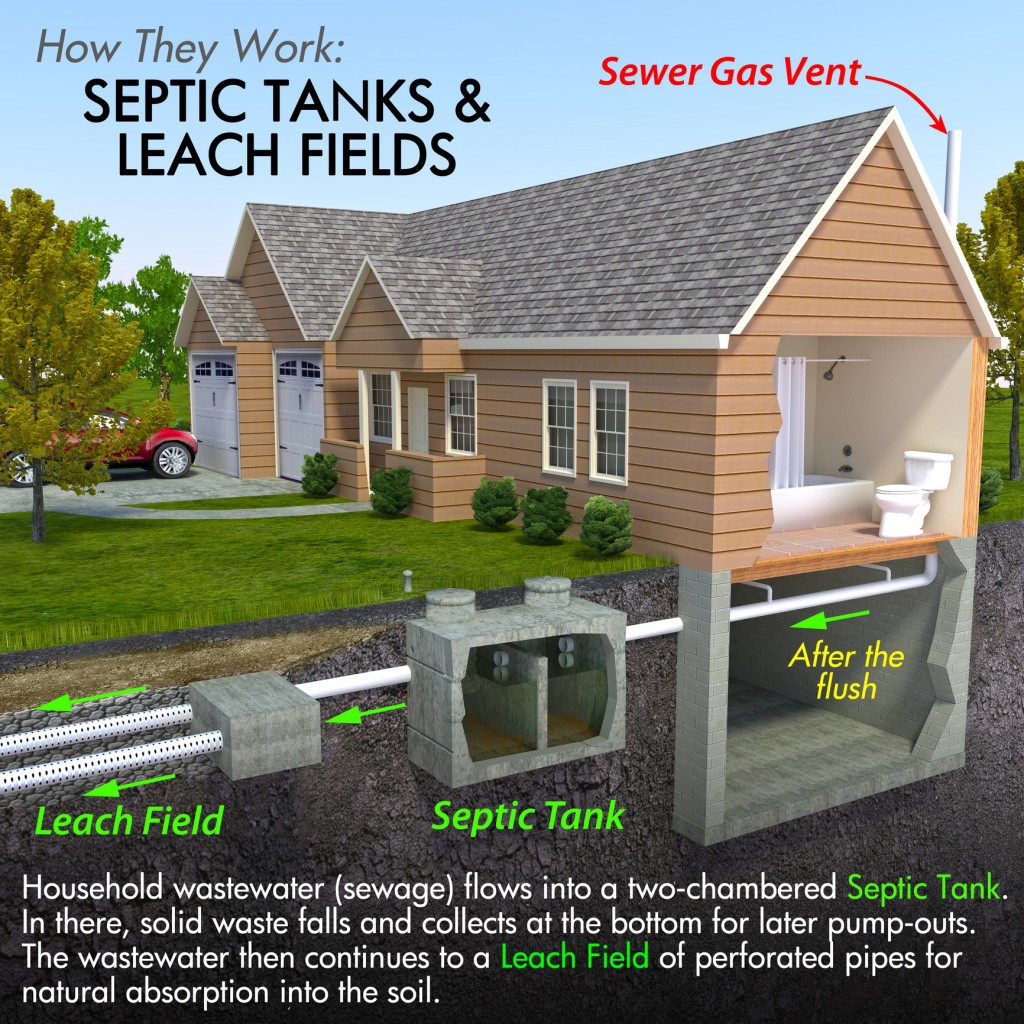Your Central Florida septic system is continuous use, 24/7, 365 days a year. Repairs can get very expensive, which is why it is important to take care of the one you have.
What should you know about calling a septic service
When you contact a septic service provider, they need to examine the sludge and scum layers in the septic tank and inspect for leaks.
According to the Environmental Protection Agency (EPA)
 Your septic tank includes a T-shaped outlet which prevents sludge and scum from leaving the tank and traveling into the drainfield area. Your tank should be pumped if the bottom of the scum layer is within six inches of the bottom of the outlet, if the top of the sludge layer is within 12 inches of the outlet, or if more than 25% of the liquid depth is sludge and scum. To keep track of when to pump out your tank, write down the sludge and scum levels found by the septic professional.
Your septic tank includes a T-shaped outlet which prevents sludge and scum from leaving the tank and traveling into the drainfield area. Your tank should be pumped if the bottom of the scum layer is within six inches of the bottom of the outlet, if the top of the sludge layer is within 12 inches of the outlet, or if more than 25% of the liquid depth is sludge and scum. To keep track of when to pump out your tank, write down the sludge and scum levels found by the septic professional.
Think at the sink!
Your septic tank has beneficial living organisms living in it, which treats and digest household waste. Pouring toxins and some cleaners down the drain can not only harm your septic system, it kills these beneficial organisms. It is important to, Think at the Sink.
Avoid chemical drain openers for a clogged drain. Instead, use boiling water or a drain snake.
Never pour cooking oil or grease down the drain.
Never pour oil-based paints, solvents, or large volumes of toxic cleaners down the drain. Even latex paint waste should be minimized.
Eliminate or limit the use of a garbage disposal. This will significantly reduce the amount of fats, grease, and solids that enter your septic tank and could clog the drainfield.
Maintain Your Drain field
Your drain field is a very important part of your septic system. It is responsible for removing contaminants before it is released onto the ground.
Parking: Do not park or drive on your drainfield.
Planting: Plant trees the appropriate distance from your drainfield to keep roots from growing into your septic system. A septic service professional can advise you of the proper distance, depending on your septic tank and landscape.
Placing: Keep roof drains, sump pumps, and other rainwater drainage systems away from your drainfield area. Excess water slows down or stops the wastewater treatment process.


